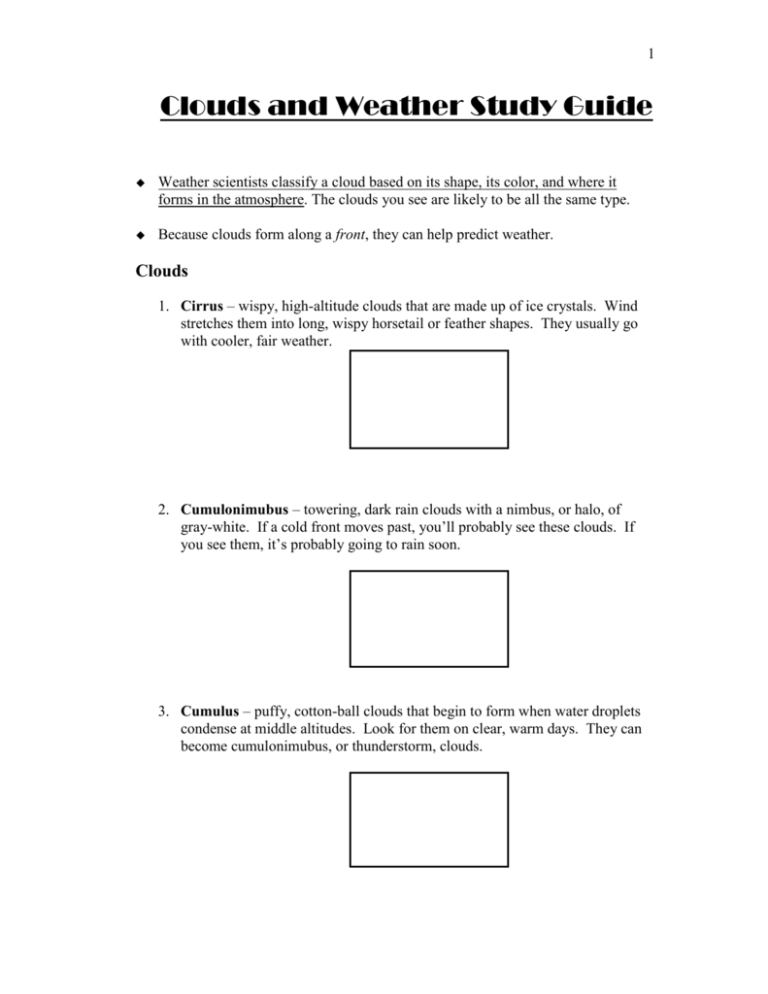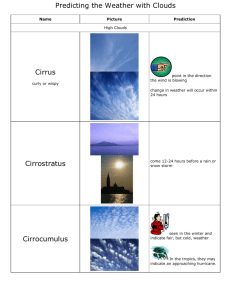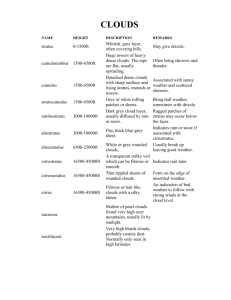Clouds-and-Weather-Study-Guide
advertisement

1 Clouds and Weather Study Guide Weather scientists classify a cloud based on its shape, its color, and where it forms in the atmosphere. The clouds you see are likely to be all the same type. Because clouds form along a front, they can help predict weather. Clouds 1. Cirrus – wispy, high-altitude clouds that are made up of ice crystals. Wind stretches them into long, wispy horsetail or feather shapes. They usually go with cooler, fair weather. 2. Cumulonimubus – towering, dark rain clouds with a nimbus, or halo, of gray-white. If a cold front moves past, you’ll probably see these clouds. If you see them, it’s probably going to rain soon. 3. Cumulus – puffy, cotton-ball clouds that begin to form when water droplets condense at middle altitudes. Look for them on clear, warm days. They can become cumulonimubus, or thunderstorm, clouds. 2 4. Stratus – flat layer of low clouds. Light rain, drizzle, or flurries likely, overcast skies at best. You see these clouds on a gray, cloudy day. Stratus clouds form a low layer of dark gray. They can occur along warm fronts. Sometimes they bring light rain or snow showers. Air Masses Move You can see air masses moving from place to place by watching how weather forms and changes. Wind speed often increases as a front approaches. Wind direction also changes. Air pressure also changes as air masses move over an area. As a cold front moves closer, air pressure often drops. Air pressure usually rises as the cold front moves over the area. Temperature, too, changes as a front moves over an area. Warmer air is brought into a region by a warm front. The temperature goes down when a cold front moves through an area. Air pressure drops as the front moves closer. Air pressure rises as the front moves over the area. Air masses form over continents and oceans. (Harcourt Science D15-17)





